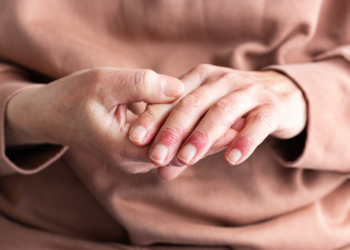Sleep apnea is a serious condition that affects millions of people worldwide. It disrupts normal breathing during sleep, leading to numerous health concerns. One of the lesser-discussed but highly uncomfortable symptoms is excessive sweating at night. People experiencing sleep apnea night sweats often wake up drenched, confused, and uncomfortable. If this sounds familiar, it might be time to seek professional guidance on the matter. Learn more about sleep apnea night sweats and when it’s essential to consult a doctor.
Why Does Sleep Apnea Cause Night Sweats?
Sweating during sleep is a common issue for individuals suffering from obstructive sleep apnea (OSA) or central sleep apnea (CSA). The reasons behind this excessive sweating include:
1. Oxygen Deprivation and Stress Response
During an apnea episode, the airway becomes blocked or the brain fails to signal proper breathing. This causes a drop in oxygen levels, triggering the body’s fight-or-flight response. As a result, the heart rate increases, blood pressure spikes, and the body begins to sweat excessively in an attempt to regulate temperature.
2. Increased Effort to Breathe
When the airway is obstructed, the body works harder to get oxygen. This extra effort leads to heightened body temperature and, in turn, excessive perspiration. People with severe sleep apnea sweats often wake up with damp sheets and clothing due to these repeated episodes.
3. Hormonal Imbalances
Interrupted sleep patterns interfere with hormone production, including those that regulate temperature and perspiration. This disruption can make sweating more frequent and intense during the night.
Who Is at Risk for Sleep Apnea and Sweating?
Certain factors increase the likelihood of experiencing both sleep apnea night sweats and the condition itself:
- Obesity – Excess weight around the neck can contribute to airway obstruction.
- Age – Older adults are at a higher risk.
- Gender – Men are more prone to sleep apnea compared to women.
- Alcohol and Sedatives – These substances relax the muscles in the throat, increasing the risk of airway collapse.
- Medical Conditions – Conditions such as diabetes, hypertension, and heart disease are often linked to sleep apnea.
How to Manage and Reduce Night Sweats from Sleep Apnea
If excessive sweating is disrupting your sleep, addressing the underlying condition is crucial. Here are some effective ways to manage it:
1. Use a CPAP Machine
Continuous positive airway pressure (CPAP) therapy is the most common treatment for sleep apnea. By keeping the airway open, it prevents oxygen deprivation and reduces stress responses that cause sweating.
2. Maintain a Cool Sleep Environment
- Keep the bedroom temperature between 60-67°F (15-19°C).
- Use breathable cotton sheets and lightweight blankets.
- Consider a cooling mattress pad or moisture-wicking sleepwear.
3. Improve Sleep Hygiene
Good sleep habits can reduce sweating sleep apnea episodes:
- Stick to a consistent sleep schedule.
- Avoid alcohol and heavy meals before bed.
- Elevate your head slightly to keep the airway open.
4. Manage Weight and Exercise Regularly
Excess weight is a major contributor to sleep apnea. Losing even a small amount of weight can significantly reduce symptoms and sweating episodes. Engage in regular physical activity to improve overall respiratory function and reduce stress.
5. Stay Hydrated
Dehydration can exacerbate sweating. Drinking plenty of water throughout the day can help regulate body temperature and minimize excessive perspiration at night.
6. Consider Medical Treatments
If CPAP therapy is not an option, other treatments like oral appliances or surgery may be recommended. Consulting a healthcare professional can help determine the best approach for your condition.
When to Seek Medical Help
While occasional night sweats can be attributed to room temperature or stress, frequent occurrences alongside loud snoring, daytime fatigue, or choking episodes during sleep should not be ignored. If you suspect sleep apnea night sweats are affecting your quality of life, consult a doctor for a proper diagnosis and treatment plan.
Conclusion
Sleep apnea is more than just a nighttime inconvenience—it can lead to significant health issues if left untreated. Excessive sweating during sleep is one of its many symptoms, but with the right management strategies, relief is possible. By addressing the root cause, improving sleep hygiene, and seeking appropriate medical interventions, a restful and sweat-free night’s sleep is within reach.


 Home
Home










